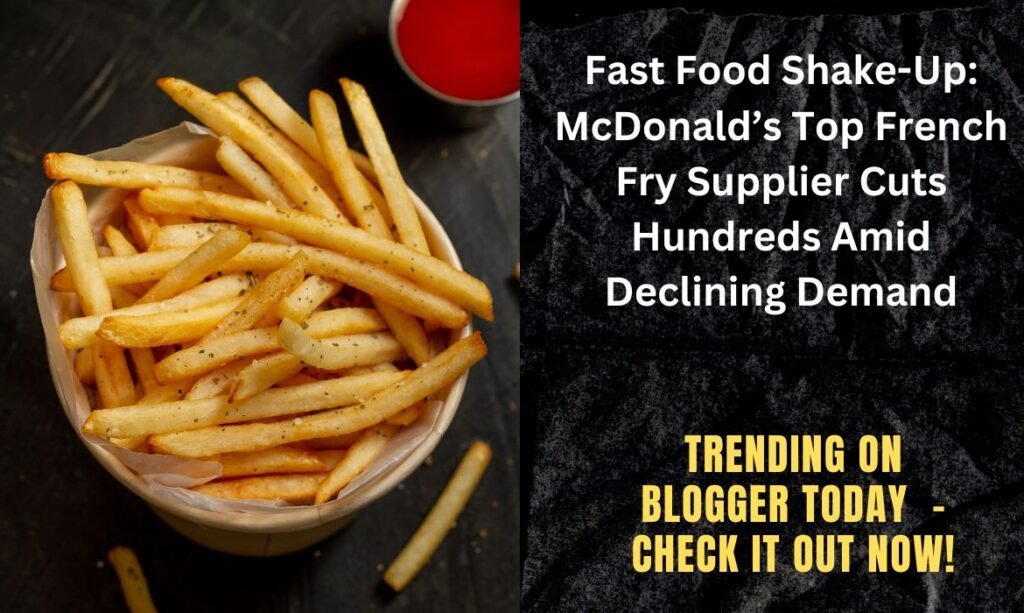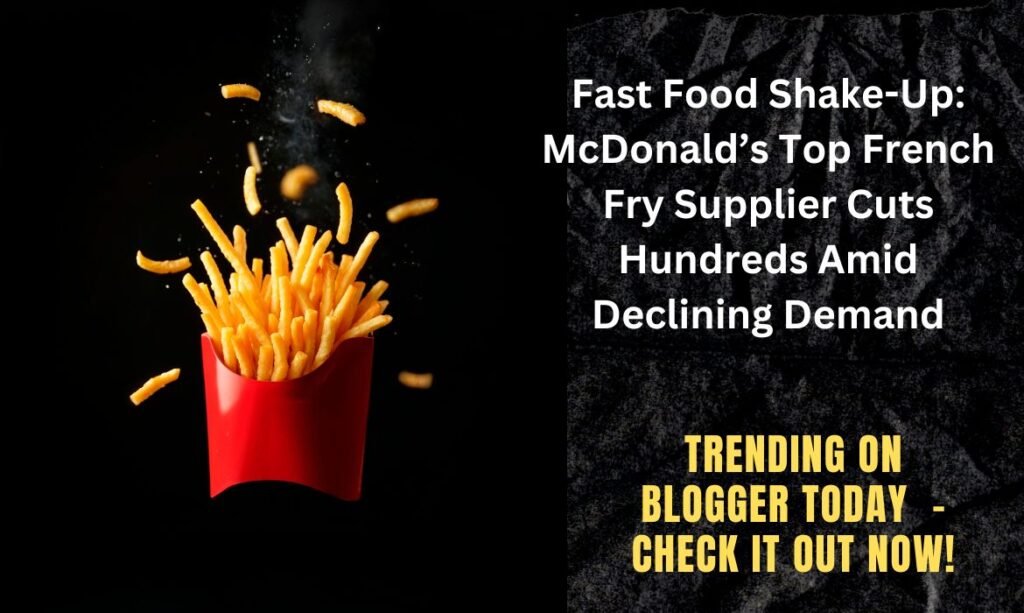Introduction about French Fry
In a surprising turn of events, McDonald’s largest supplier of French fries has announced significant layoffs, a move that reflects a broader trend in American eating habits. Once a staple of fast-food dining, French fries are seeing a decline in popularity, prompting both suppliers and restaurants to reevaluate their offerings. This article delves into the reasons behind this shift, the impact on the fast-food industry, and what it means for consumers.
The Rise and Fall of French Fries
A Staple in American Diets
For decades, French fries have been synonymous with fast food. They have been a go-to side dish, complementing burgers and chicken nuggets. The appeal of crispy, golden fries is deeply rooted in American culture, making them a fixture in the menus of McDonald’s and countless other fast-food chains.

Changing Consumer Preferences
However, recent years have seen a significant shift in consumer preferences. Health-conscious choices and dietary trends, including low-carb diets and a growing interest in plant-based options, have contributed to a decline in fry consumption. According to a 2022 report from the NPD Group, visits to fast-food restaurants for fries fell by 5% compared to previous years. This trend has prompted McDonald’s and its suppliers to rethink their strategies.
The Layoff Announcement
Who Is Affected?
In October 2023, McDonald’s largest French fry supplier, a company that has been a crucial partner for years, announced it would lay off hundreds of workers. This decision stems from declining orders as fewer customers opt for fries alongside their meals.
The Scale of Layoffs
Reports indicate that the layoffs could affect up to 300 employees, primarily in manufacturing and distribution roles. These cuts highlight not just a single company’s struggles, but an entire industry grappling with changing consumer behavior.
Economic Implications due to french fry
Impact on the Fast-Food Supply Chain

The layoffs at the French fry manufacturer are a stark reminder of how interconnected the fast-food supply chain is. Suppliers rely heavily on consistent demand from major chains like McDonald’s. As fries become less popular, the ripple effects can lead to job losses and economic instability within local communities dependent on these manufacturing jobs.
A Shift in Fast-Food Strategies
In response to declining fry sales, many fast-food chains are diversifying their menus. McDonald’s, for instance, has introduced new side options, including salads and fruit, to cater to health-conscious customers. This strategy is not just about adapting to trends; it’s about survival in an increasingly competitive market.
Also Read: Rise of Youtube
Health Trends and Consumer Awareness
The Rise of Health-Conscious Eating
The decline in French fry consumption can be attributed to a growing awareness of health issues related to fried foods. Obesity rates in the U.S. have reached alarming levels, leading many consumers to rethink their dietary choices. A survey conducted by the International Food Information Council in 2023 found that 63% of Americans are actively trying to eat healthier, with fried foods often being the first to go.
Plant-Based and Alternative Options
As consumers shift towards healthier options, plant-based diets are gaining traction. Fast-food chains are responding by introducing items that cater to this market, such as veggie burgers and baked alternatives. McDonald’s has even ventured into the plant-based realm, testing out new menu items that align with these dietary preferences.
The Future of French Fries in Fast Food
Innovating with Fries
While the demand for traditional fries may be waning, there is potential for innovation. Some fast-food chains are experimenting with alternative cooking methods, such as air-frying, to offer healthier versions of fries. Additionally, unique flavorings and gourmet options may attract consumers back to this classic side dish.

Consumer Engagement and Feedback
To regain interest in fries, companies like McDonald’s are actively engaging with consumers through social media and customer feedback. Understanding what customers want can lead to more tailored menu offerings and, potentially, a resurgence in French fry sales.
Case Studies: Adapting to Change
McDonald’s Menu Evolution
McDonald’s is no stranger to adaptation. Over the years, the company has made significant changes to its menu based on consumer demand. For example, the introduction of McCafé beverages has proven successful in drawing customers who might otherwise skip a traditional fast-food meal.
Competitors’ Strategies
Other fast-food chains are also feeling the pressure. Wendy’s, for instance, has launched a series of new sides, including fresh salads and baked potatoes, to complement its traditional offerings. These changes reflect a broader industry trend focused on health and variety.
Conclusion
The layoffs at McDonald’s largest French fry supplier serve as a wake-up call for the fast-food industry. As consumer preferences evolve, it’s clear that traditional menu items, like French fries, are no longer the guaranteed sellers they once were. The industry must adapt or risk being left behind.
By innovating and embracing new dietary trends, fast-food chains can continue to thrive in a changing landscape. For now, the fate of French fries remains uncertain, but one thing is clear: the fast-food industry is at a crossroads, and its next steps will define its future.
Final Thoughts
As we move forward, it’s essential for both consumers and businesses to stay informed about these changes. Understanding the reasons behind shifting preferences can help consumers make better choices, while businesses must remain flexible and responsive to ensure their survival in an ever-evolving market. The future may be uncertain, but adaptation and innovation will be the keys to success in the fast-food world.